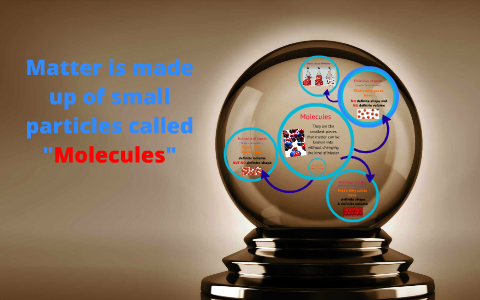When we consider the composition of matter, the conversation invariably leads us to the fundamental building blocks known as molecules. These entities, formed from clusters of atoms, have long been regarded as the quintessential components of the physical realm. However, a playful yet profound question emerges: Is it conceivable to have matter that is not made of molecules? This inquiry invites us to traverse the boundaries of conventional understanding and delve into the realms of theoretical and exotic forms of matter.
To embark on this exploration, it is essential first to delineate what constitutes matter. At its core, matter is anything that occupies space and possesses mass, which includes solids, liquids, and gases—all of which are ultimately composed of molecules. Molecules themselves consist of two or more atoms bonded together by chemical forces. Yet, even within this established framework, there exist peculiar exceptions that challenge the notion of matter strictly as molecular assemblages.
At the microscopic scale, we encounter the enigmatic realm of subatomic particles: protons, neutrons, and electrons. These building blocks defy the molecular paradigm; they are not constructed from molecules but are fundamental constituents of atoms themselves. For instance, hydrogen, the simplest atom, comprises a single proton and a single electron. Herein lies a compelling possibility: could matter exist in forms that are solely derived from these subatomic particles—essentially, non-molecular matter?
One of the most intriguing candidates for such non-molecular matter is plasma. Plasma is often described as the fourth state of matter—alongside solid, liquid, and gas. Composed of ionized gas particles, plasma is abundant in the universe, constituting stars and nebulae. In this state, electrons are stripped from their atomic nuclei, resulting in a collection of charged particles that exhibits unique properties distinct from molecular compositions. As such, while plasma is not made of molecules in the traditional sense, it remains a state of matter, thereby complicating our understanding of what matter can embody.
Moreover, we must consider the realm of exotic matter, which arises from speculative theories in physics. For example, concepts like quark-gluon plasma represent matter at extreme temperature and density conditions, such as those found in the aftermath of heavy-ion collisions in particle accelerators. In this state, quarks and gluons, the fundamental constituents of protons and neutrons, are no longer confined within the traditional structure of atoms. The transition into a quark-gluon plasma implies that matter exists in a fundamentally different framework devoid of molecular organization.
Additionally, theoretical constructs such as dark matter further evoke contemplation on the nature of matter. Predicted to account for roughly 27% of the universe’s mass-energy content, dark matter does not interact through electromagnetic forces, making it invisible and undetectable by conventional means. Its existence suggests a form of matter that does not fit within the confines of our current understanding of molecularity. While dark matter’s constitution remains elusive, the proposition raises significant inquiries regarding the validity of a purely molecular understanding of matter.
Furthermore, let us examine the fascinating field of condensed matter physics. In this domain, phenomena such as Bose-Einstein condensates (BEC) illuminate yet another paradigm of matter that differs from the molecular trend. BECs arise at temperatures approaching absolute zero, where a group of bosons occupy the same quantum state. This collective behavior leads to macroscopic quantum phenomena, such as superfluidity and superconductivity, challenging the necessity of molecular constructs in forming states of matter.
In light of these explorations, a fundamental challenge emerges: can the essence of molecular structure truly encapsulate the entirety of matter? The complexities of matter transcend mere molecular arrangements—an assertion supported by the eclectic variety of states and forms that have been identified. The existence of non-molecular matter not only broadens our definitions but also heightens our curiosity toward the unknown.
Yet, an inquiry remains: if non-molecular matter exists, how do we define and categorize it? The dichotomy between molecular and non-molecular may require refinement. As science advances, our understanding will undoubtedly evolve, potentially unveiling new classifications of matter that lie beyond traditional boundaries. The implications of such discoveries could be momentous, influencing our grasp of the universe and the fundamental laws that govern it.
In conclusion, as we ponder the playful question of whether matter devoid of molecules exists, we uncover a tapestry of diverse and exotic forms that reconfigure our understanding of the material world. From plasma to exotic states such as quark-gluon plasma and the enigmatic nature of dark matter, we are compelled to reconsider the paradigms that have shaped our discourse about matter. Thus, the exploration of non-molecular matter not only challenges existing frameworks but also stimulates intrigue and invites further investigation into the mysteries of the universe.












